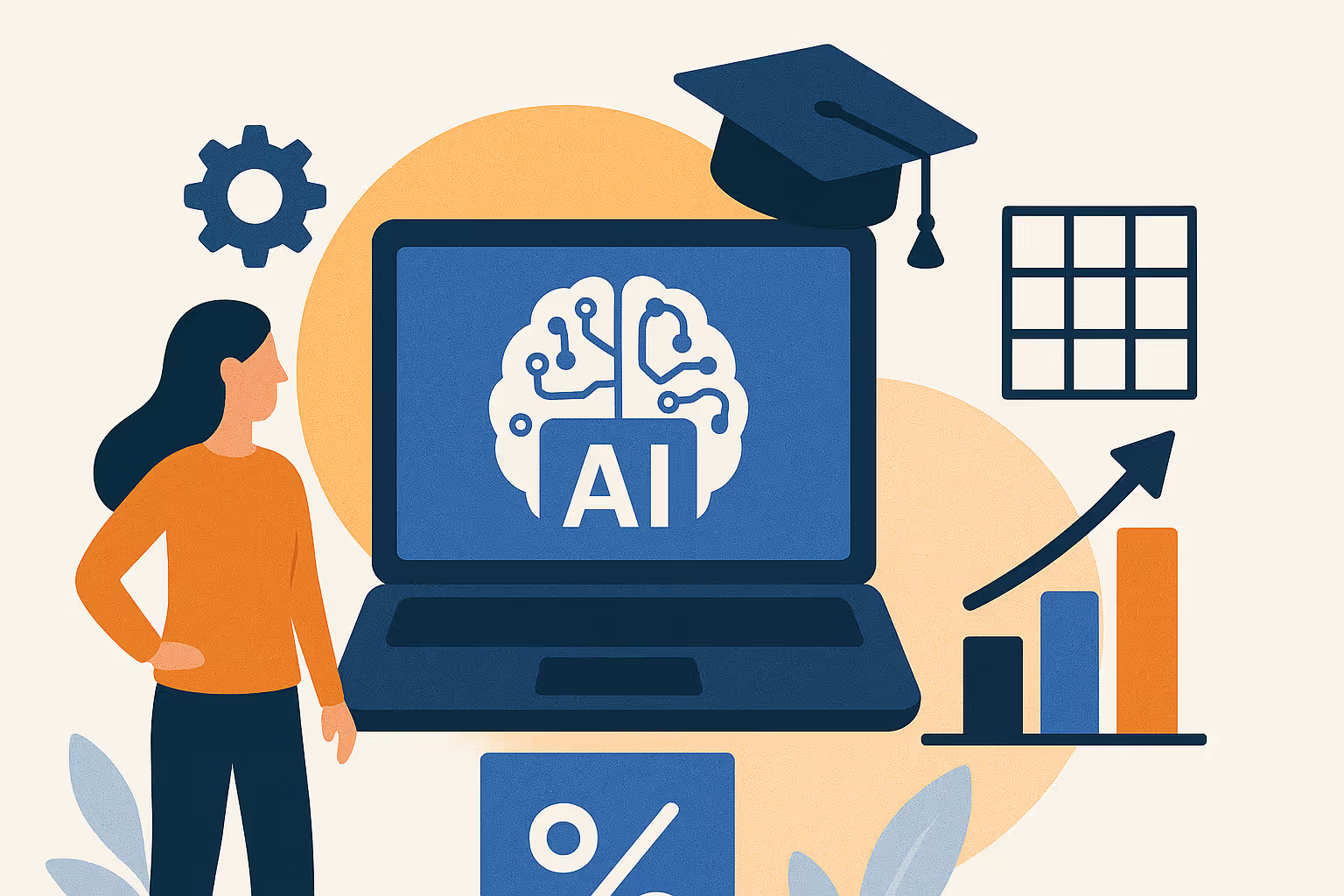About the Blog
Higher ed marketers, 2025 is here, and with it comes new opportunities to captivate, engage, and enroll students in ways never seen before. As the digital landscape shifts, institutions must prioritize innovation and personalization to remain competitive.
From personalized experiences to AI-powered engagement, here’s your essential guide to this year’s top trends.
1. Personalized Student Journeys
Students today expect Amazon-like personalization — tailored emails, customized recommendations, and seamless user experiences. The days of one-size-fits-all marketing are over.
What to prioritize:
- Segment your student database into key personas based on interests, then create tailored email content using CRM insights.
- Implement advanced CRM systems, like Element451, to track student interests, behaviors, and engagement.
- Use dynamic content in your emails and website that changes based on individual preferences (Example: Show a student more about financial aid if they've searched it before).
- Lean into AI-powered tools to segment and nurture prospective students at scale.
Why it matters: Personalization builds trust, which translates into higher enrollment and retention rates. Bonus: it helps you stand out in a competitive market.
In the episode of The Application with Mickey Baines, he stresses Amazon’s customer experience strategies provided a fascinating lens through which to view the challenges and opportunities in higher education. One of the key lessons he shared was the importance of understanding and leveraging data to create highly personalized experiences — something Amazon does exceptionally well.
In higher education, this could translate to everything from recommending specific courses based on a student’s academic history to offering tailored career services and internship opportunities. However, as Mickey pointed out, achieving this level of personalization requires a significant investment in data collection and analysis. Institutions need to think beyond basic demographic information and start capturing data that reflects each student’s unique interests, behaviors, and needs.
Moreover, Mickey emphasized that while technology, such as CRM systems and AI, plays a crucial role in this transformation, it’s equally important to have the right people in place. He advocated for the creation of experience-focused positions within institutions—roles dedicated to overseeing and enhancing the student experience across all touchpoints.
2. Video Content Dominance
Video remains the undisputed champion of digital marketing, but the formats that perform best are shifting. From TikTok to virtual campus tours, students want authentic, visually engaging content. In the Confessions of a Higher Ed CMO episode with John Azoni, he notes that short-form video is especially powerful for higher ed marketers to connect with prospective students by capturing campus life, trends, and relatable experiences. Videos that evoke emotions—whether laughter, nostalgia, or excitement—build a neural pathway to the brand in viewers’ minds, making them feel more connected to the institution.
What to prioritize:
- Develop a video content calendar to maintain a steady flow of engaging content throughout the year.
- Create bite-sized videos that highlight student life, academic programs, and career outcomes.
- Explore user-generated content—students sharing their stories will feel more authentic and relatable.
- Invest in live video for Q&A sessions, admissions updates, and behind-the-scenes glimpses.
Why it matters: Video is shareable, digestible, and impactful. It’s your most powerful tool for building emotional connections with prospective students.
3. AI-Powered Marketing
Artificial intelligence is transforming marketing in higher ed. From automating outreach to analyzing campaign performance, AI can make your life a lot easier while improving results. Ardis Kadiu and JC Bonilla recommend carving out time daily to stay informed on the latest AI developments through curated sources like industry podcasts, blogs, and newsletters. But staying informed isn’t enough—practical application is critical. Experimentation with new tools and workflows helps institutions uncover their strengths and challenges in AI adoption.
What to prioritize:
- Use AI assistants to provide instant responses to student inquiries on your website. and gradually integrate more advanced AI capabilities for predictive analytics.
- Use AI assistants to provide instant responses to student inquiries on your website.
- Leverage AI-powered ad platforms to target students based on location, behavior, and intent.
- Automate repetitive tasks like email follow-ups or application reminders to focus on higher-level strategy.
Why it matters: AI saves time and provides actionable insights, allowing you to allocate resources more strategically and focus on what really drives enrollment.
4. Interactive Content for Deeper Engagement
Static PDFs and text-heavy brochures are out—interactive content is in. Students want to engage with your institution, not just read about it.
What to prioritize:
- Test different types of interactive content and analyze engagement metrics to refine your approach.
- Build interactive quizzes like “Which Major Fits You Best?” or “What’s Your Ideal Campus Experience?”
- Launch virtual campus tours with clickable hotspots that showcase academic facilities, dorms, and social spaces.
- Use polls and Q&A sessions on Instagram Stories to create two-way conversations.
Why it matters: Interactive content encourages prospective students to engage directly with your brand, making it more memorable and fun.
5. Voice Search and Conversational Marketing
With the rise of smart speakers and voice search, optimizing for conversational queries is a must for higher ed marketers.
What to prioritize:
- Conduct keyword research to identify common student queries and incorporate them into your content strategy.
- Rewrite website copy to include natural, question-based language that mirrors how students search (e.g., “How do I apply for financial aid at [University]?”).
- Optimize for local SEO—many voice searches are location-based (“colleges near me”).
- Experiment with conversational marketing tactics like voice-activated chatbots.
Why it matters: As voice search becomes more popular, optimizing for it ensures students find your institution quickly and easily. Google Search Console and Google Analytics emerge as the go-to tools for monitoring website performance. Jamie and Timothy discuss how these platforms help track metrics like page views, search query rankings, and click-through rates. They also explore how to use these insights to refine SEO strategies. For instance, Google Search Console data can reveal which search terms are leading users to your site, while Google Analytics tracks user behavior once they arrive.
6. Focus on Social Proof
Students rely heavily on reviews, testimonials, and success stories when choosing a college. Providing authentic, relatable social proof can make a big difference in building trust.
What to prioritize:
- Develop a structured testimonial collection process to gather student and alumni stories consistently.
- Highlight student success stories on your website, in videos, and on social media.
- Encourage alumni to leave reviews and share their career milestones on LinkedIn.
- Leverage influencer marketing by partnering with current students to share their experiences. In the Confessions of a Higher Ed Social Media Manager episode Lia Haberman says for higher ed, influencer marketing means leveraging students, alumni, and faculty to act as relatable amplifiers for the institution's messaging. Haberman notes that while traditional marketing can feel impersonal, influencers offer a genuine voice, fostering trust and engagement.
Why it matters: Social proof helps prospective students visualize themselves succeeding at your institution—and nothing is more powerful than that.
Stay Ahead in 2025
By focusing on these key trends, your institution can stay ahead of the competition and deliver the personalized, digital-first experiences today’s students expect. Ready to take the next step? Start by evaluating your current digital marketing strategy and identifying key areas for AI-driven innovation.
FAQS
1. How can personalization improve higher ed marketing strategies in 2025?
From personalized emails to dynamic website elements, these strategies make students feel seen and valued, increasing engagement, applications, and retention.
2. Why is video content so important for higher education marketing?
Short, authentic videos showcasing student life, virtual tours, or career success stories are highly shareable and effective at building emotional connections.










